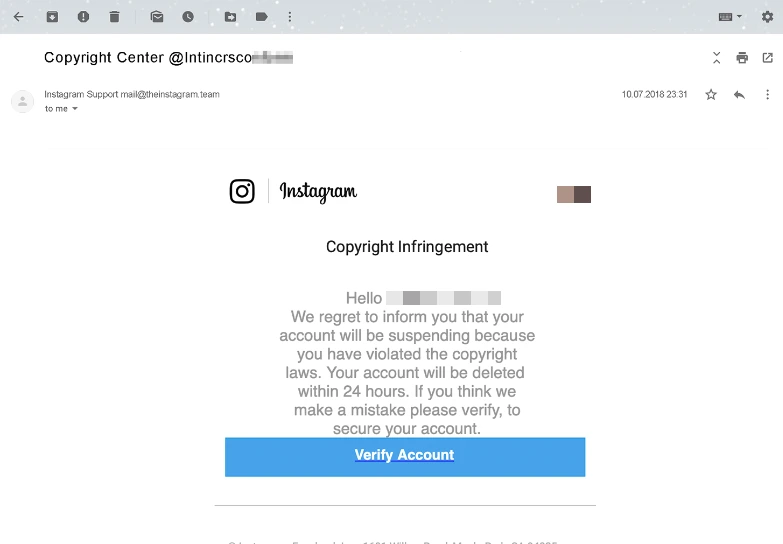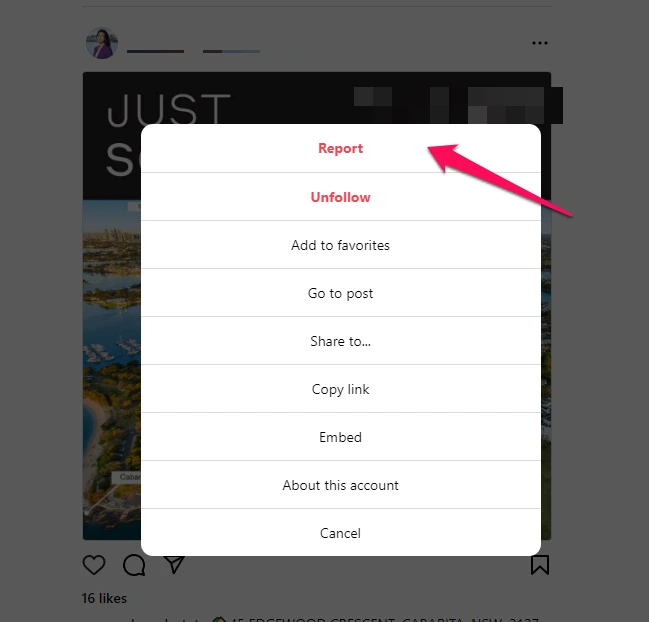As the digital age progresses, so too does the sophistication of digital scams. Instagram, a platform known for sharing snapshots of our lives, has not been immune to this trend. With over a billion users, it’s an attractive hunting ground for scammers. The scams on Instagram have become increasingly prevalent, making it crucial for users to arm themselves with the knowledge to spot and evade them.
This guide is designed to help you navigate this rapidly-evolving landscape safely, ensuring your Instagram experience remains scam-free.
Let’s dive in!
How common are Instagram scams?
According to a report by Statista, Instagram scams are far more common than one might assume. The average fraud rate among Instagram influencers was as high as 45.32% in 2022 and while that’s slightly lower compared to in 2021 (49.23%), it still translates to almost every other influencer being subjected to Instagram scams! This is alarming, to say the least.
Note that these fraud rates encapsulate various fraudulent activities such as fake followers, counterfeit “likes,” deceptive stories, views, and comments. With the rise of influencer marketing, scammers have found new ways to exploit the system and make a profit.
But why exactly are scams on Instagram so popular? Well, there are a few reasons:
- High engagement rates: With more than 2 billion active monthly users, Instagram offers scammers access to a large pool of potential victims.
- Visual platform: Instagram’s visual focus makes it easier for scammers to create attractive and convincing posts rather than relying on well-crafted text.
- Ease of use: Instagram is a user-friendly platform, meaning that setting up a fake account or running a scam is relatively easy.
Common Instagram scams
So now that we know how prevalent Instagram scams are, let’s take a look at the common types of scams you’re likely to encounter on the platform.
Instagram link scams
One of the most common scams encountered on Instagram is known as a “link scam.” Here, scammers on Instagram lure victims by posting alluring photos or offering irresistible deals with a link attached.
These links, usually shortened, lead to phishing websites designed to steal personal data or login credentials. Victims may be tricked into entering their Instagram login details, credit card information, or other sensitive data.
Always be cautious when following links on Instagram, especially those that promise something too good to be true. If you come across a link in a post or direct message, take a moment to consider the source. Do you trust this person or organization? Is the deal they’re offering realistic? If not, it’s best to steer clear.
Instagram DM scams
Another common trap that scammers set on Instagram is the Direct Message (DM) scam. Scammers use this tactic to reach out to Instagram users directly, often posing as a trusted friend or a well-known organization.
The messages typically contain some sort of bait, such as a fantastic giveaway, a warning about a security issue with your account, or a business proposition that seems too good to ignore.
Notably, Instagram frauds conducted through direct messages can be particularly persuasive. The scammers often use sophisticated methods, making it hard to distinguish between a legitimate message and a scam. They might use profile pictures, account names, and even writing styles that mimic those of your friends or trusted entities.
Here’s an example of a popular DM Instagram scam circulating on the Internet:
In this example, the fraudster is baiting potential victims by promising payment in exchange for a post. This can be used to target vulnerable users, such as college students or those looking for quick cash.
Instagram phishing scams
Phishing scams involve tricking users into providing sensitive information, such as login credentials or credit card details, under false pretenses.
On Instagram, these scams often take the form of messages or emails that impersonate the Instagram team, claiming there’s an issue with your account that needs immediate attention.
A common phishing scam on Instagram involves a message stating that your account has violated copyright laws and will be deleted unless you take immediate action. The message will then direct you to a link, which leads to a counterfeit Instagram login page. Once you enter your username and password on this page, the scammers can gain access to your account.
Here’s an example of what this looks like:
To avoid falling victim to phishing scams, always verify the source of any suspicious messages. Remember that Instagram will not ask for your password through a message or email. Additionally, check the URL of any site where you’re entering your login information to ensure it’s the official Instagram site.
Instagram email scams
While we’ve touched on this briefly in a previous section, we feel that email scams on Instagram deserved their own category due to their prevalence.
Instagram email scams often follow a similar pattern as phishing scams, where the victim is tricked into providing sensitive information under false pretenses. These emails may claim that you’ve been selected for an incentive or prize and that you need to verify your account information to claim it.
The goal is to get the victim to click on a link or download an attachment, which can lead to malware installation or reveal sensitive data.
Instagram verification scams
Last but not least, Instagram verification scams are another prominent form of deceit on the platform. In these scams, fraudsters will often impersonate Instagram officials offering to “verify” your account—for a fee.
They might approach you through direct messages or emails, claiming that they can get the blue verification tick for your account if you pay them a certain amount. They may even present you with an official-looking form to fill out.
The goal here is to trick you into sharing sensitive information or money. Remember, Instagram has a clear policy stating that they do not sell account verifications and the only way to obtain one is through a request directly in the app.
There are countless other types of scams on Instagram, each with its own unique way of manipulating and conning users. What we’ve discussed here are just some of the most common examples. Nevertheless, this information should provide you with vital insights on what to look out for.
How to avoid Instagram scams
At this point, you might be wondering what you can do to protect yourself from Instagram scams. Fortunately, there are some steps you can take to minimize your chances of falling victim.
- Always be skeptical: as we’ve mentioned throughout this post, always approach messages or posts with a healthy dose of skepticism. If something seems too good to be true, it probably is.
- Verify the source: before clicking on any links or providing any personal information, make sure to verify the source. If it’s a direct message claiming to be from Instagram, double-check with the official Instagram account. If it’s an email, check the sender’s address and do some research online.
- Be cautious of shortened links: shortened links should be a red flag, so always proceed with caution when clicking on them. Use a URL expander tool to preview the full link before opening it.
- Enable two-factor authentication: two-factor authentication adds an extra layer of security to your Instagram account, making it harder for scammers to gain access.
- Report suspicious messages and posts: if you come across any scam attempts on Instagram, make sure to report them immediately. This helps protect other users from falling victim to the same scams.
How to report scams on Instagram?
If you encounter a scam on Instagram, it’s important to report it to keep the community safe. Follow the instructions below to report different types of suspicious activities:
How to report a Post or Profile
- Navigate to the suspicious post or profile.
- Tap on the three dots at the top-right corner.

- Choose “Report”.

Reporting a Direct Message
- Open the suspicious conversation.
- Tap on the “i” at the top-right corner.
- Tap “Report”.
How to report an Email
If you receive a suspicious email claiming to be from Instagram, you can report it by forwarding the email to [email protected]. Keep in mind Instagram won’t be able to respond to your report, but they’ll use the information you provide to investigate and take appropriate actions.
The good news is that reporting is totally anonymous and the person you report won’t know who did it. Instagram takes these reports seriously and will act swiftly to protect the integrity of their platform.
FAQs
What can a scammer do with my Instagram account?
If a scammer gains access to your Instagram account, they can send spam messages or malicious links to your followers, impersonate you to defraud your friends, family, or followers, promote inappropriate content or products, and even access your personal information. They could also potentially sell your account if it has a large following.
What if a scammer has my phone number?
If a scammer obtains your phone number, they might bombard you with unsolicited calls, SMS or scam you through SMS phishing (smishing). Worse, they may sell your number to other scammers, intensifying the unwanted communication. Your phone number can also be used to recover or hack into your other personal accounts if it’s linked to them.
Can someone steal my info through an Instagram scam?
Yes, an Instagram scam can potentially lead to your personal information being stolen. Scammers can trick you into revealing sensitive data like login credentials, credit card numbers, and more. They can use phishing tactics, fake giveaways, or impersonation scams to lure you into providing this information.
